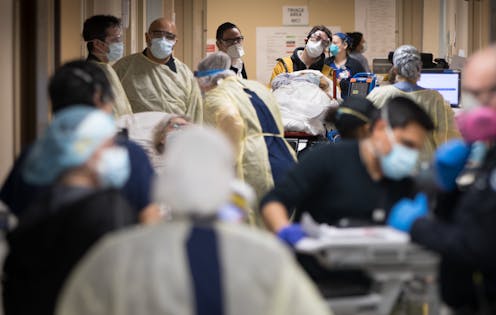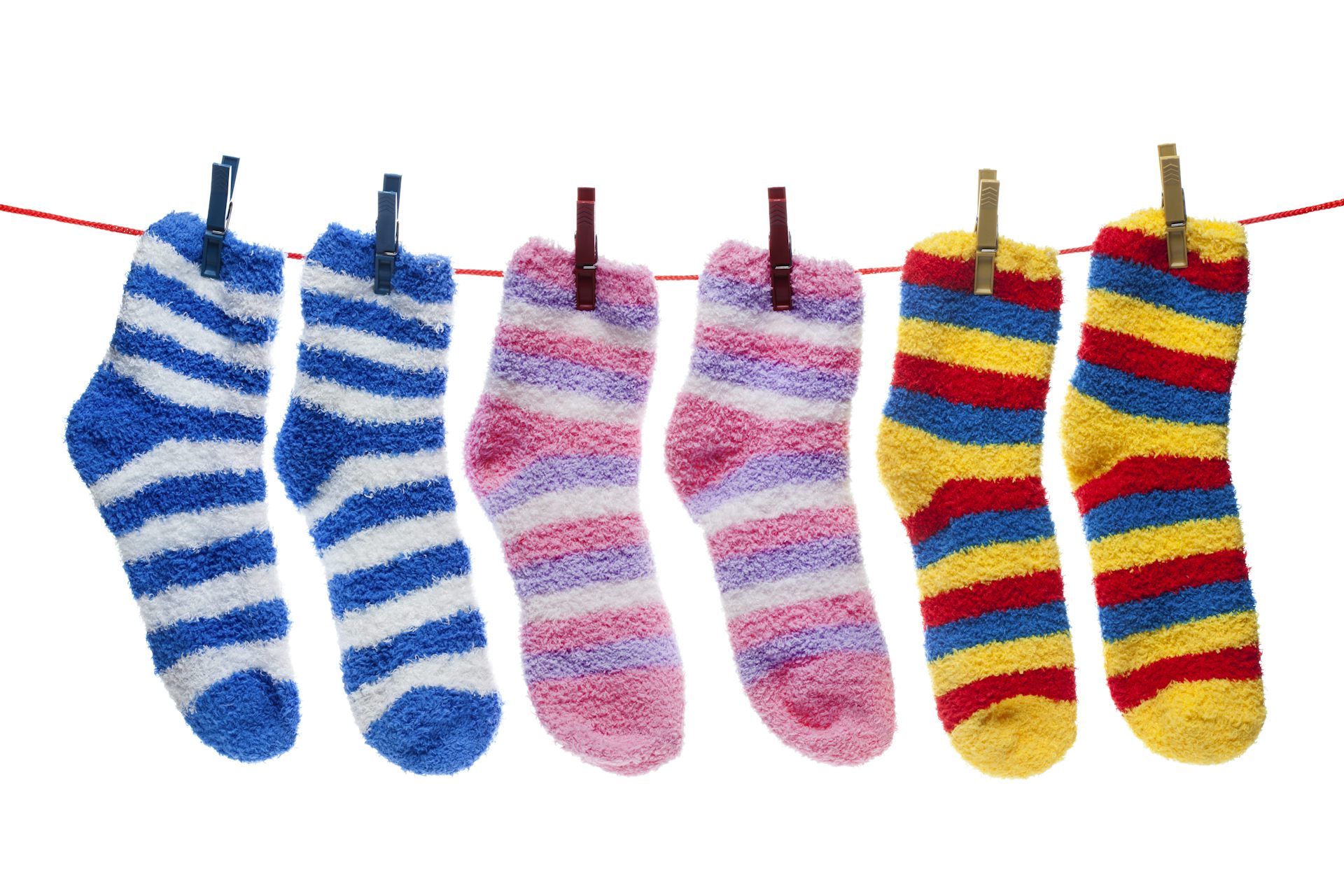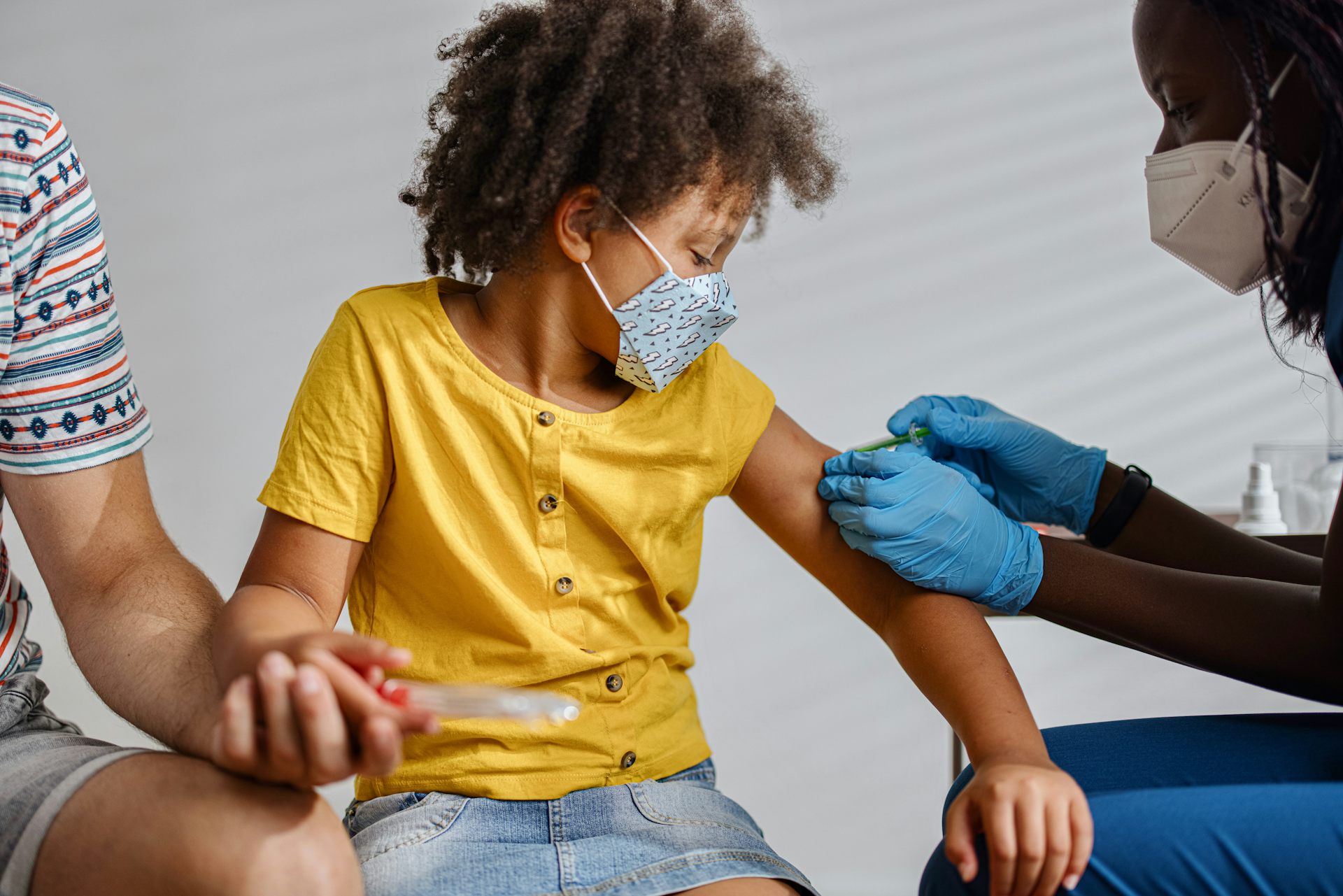What happens when COVID-19 and influenza collide? Can hospitals handle the strain?
Pandemic policy experts offer 10 recommendations that could reduce the risk that a bad flu season on top of the COVID-19 pandemic will overwhelm hospitals.

Flu season is just around the corner, and the United States still hasn’t contained the coronavirus. That sets up an unsettling challenge this fall: how to minimize the impact of the simultaneous spread of COVID-19 and seasonal influenza so hospitals aren’t overwhelmed.
As pandemic policy experts, we understand the strain that the combination of COVID-19 and influenza could have on our health care system. Our new report, COVID-19 and Seasonal Influenza: Preparing for a Collision, just published by the Scowcroft Institute of International Affairs at Texas A&M University, explains the risks and offers 10 recommendations.
The numbers suggest a risky fall and winter
Close to 5 million people in the United States have been infected with SARS-CoV-2, and more than 170,000 have died. In some hospitals, such as Starr County Memorial on the Texas-Mexico border, the caseloads overwhelmed capacity.
Given that both COVID-19 and influenza are respiratory viruses requiring similar supplies and equipment, hospitals that are already struggling to accommodate COVID-19 patients may not be able to manage the additional flu patients.
In recent years, influenza-related hospitalizations ranged from a low of around 280,000 in 2015-2016 to a high of 810,000 in 2017-2018. According to data from the American Hospital Association, as of March 2020 the U.S. had 924,107 total staffed hospital beds. If a city or state becomes both an influenza hot spot and a COVID-19 hot spot simultaneously, that would almost certainly overwhelm hospital capacity.
Additionally, some of the measures that have been effective in managing hospital surge capacity, such as Houston’s use of Texas Children’s Hospital for adult COVID-19 patients, might not be possible since children under 5 years of age are one of the groups most likely to have severe outcomes from seasonal influenza, including hospitalizations and deaths.
How to reduce the risk of a double whammy
To reduce the risk of a bad season of both COVID-19 and influenza overwhelming U.S. hospital capacity, our report offers 10 recommendations.
1) Increase the number of people who get the flu vaccine. The flu vaccine is one of our best defenses against seasonal flu, yet under 50% of adults and just over 60% of children get the annual vaccination. Increasing flu vaccine use could help keep thousands of children and adults out of the hospital.
2) Mandate face coverings at the state and local levels in accordance with CDC guidelines. Wearing masks, even when an individual feels healthy, can help reduce the spread of both the flu and COVID-19, particularly from pre-symptomatic or asymptomatic people. State and local officials should implement and enforce these mandates in accordance with CDC guidance and transmission risk in their communities.
3) Add sanitation measures and room ventilation in K-12 schools. With students returning to in-person classes in some districts, there is risk of increased COVID-19 spread, and schools are a well-known driver of seasonal influenza spread. Increasing room ventilation, holding classes and lunches outside whenever possible and making hand sanitizer readily available can reduce transmission risks.
4) Evaluate athletes’ cardiovascular condition before they return to practice after a COVID-19 infection to help prevent cardiac injury or post-infection complications. As college and professional fall sports return, it will be important to protect both the health of the fans and the safety of the athletes.
5) Maintain social distancing measures and quarantine procedures for travelers – doing so can minimize both the flu and COVID-19. As some countries lift travel restrictions, syndromic surveillance (i.e., monitoring people for symptoms such as fever) of airline passengers and other international travelers is important to reduce the risk of of spreading the virus.
6) Develop a vaccine infrastructure for producing and distributing a future COVID-19 vaccine. Vaccine development is not the only challenge in making a vaccine available to the world. It will also have to be produced and disseminated to billions of people – something never done before. That will require building or retrofitting factories and preparing transportation and distribution networks for the scale of the challenge.
7) Launch a vaccine education campaign to counter misinformation about both the influenza and COVID-19 vaccines. Vocal opposition to vaccines could hurt the United States’ ability to achieve herd immunity through a vaccine. We recommend developing a national campaign that can be implemented at the local level and led by local public health officials, business people, doctors and religious leaders.
8) Expand hospital capacity and production of medical equipment. Seasonal influenza alone can bring hospitals to near capacity. To accommodate two respiratory viruses simultaneously, we must find innovative ways to increase capacity and production of medical supplies and equipment. The ventilator shortages last spring were a warning.
9) Create a national strategy for COVID-19 response. The United States needs a national strategy to assist states with coordination, supply procurement, collaboration and guidance as they respond to the COVID-19 pandemic.
10) Establish greater COVID-19 data transparency at the local, state and federal levels. Information on COVID-19 can be confusing, with the differing symptoms and levels of severity and the initial confusion about what qualifies as a COVID-19 death. Additionally, there have been articles suggesting that data might not be accurately reported. With greater transparency and communication about how cases are recorded and why contract tracing is important, it may be possible to give the public a better understanding of the pandemic and reduce national anxiety.
The U.S. will almost certainly face a challenge this fall as students return to campuses and classrooms and people begin to travel more. Overwhelming hospitals is not inevitable, however, if the U.S. begins preparing now to manage both COVID-19 and influenza in its communities.
Andrew Natsios is affiliated with the Hudson Institute and Director of the Scowcroft Institute of International Affairs at the Bush School of Government at Texas A&M University.
Christine Crudo Blackburn and Leslie Ruyle do not work for, consult, own shares in or receive funding from any company or organization that would benefit from this article, and have disclosed no relevant affiliations beyond their academic appointment.
Read These Next
Buying a gift for a loved one with cancer? Here’s why you should skip the fuzzy socks and give them
Gifts that make a true connection acknowledge the ugly parts of illness and provide relief from daily…
Tired of the same old Christmas songs? So were these countercultural carolers
Roots reggae, thrash metal and pop punk add new layers to familiar holiday tropes.
Down-ranking polarizing content lowers emotional temperature on social media – new research
A new tool lets researchers get a handle on how social media algorithms affect emotions and polarization.





